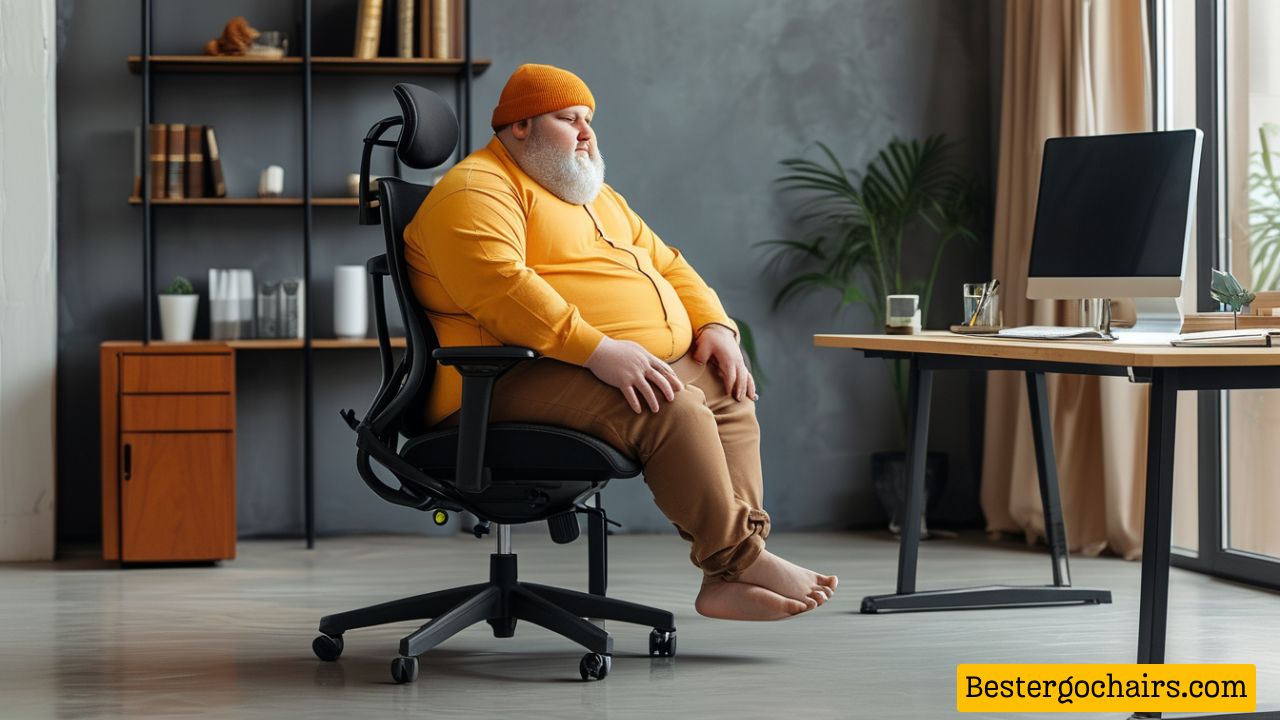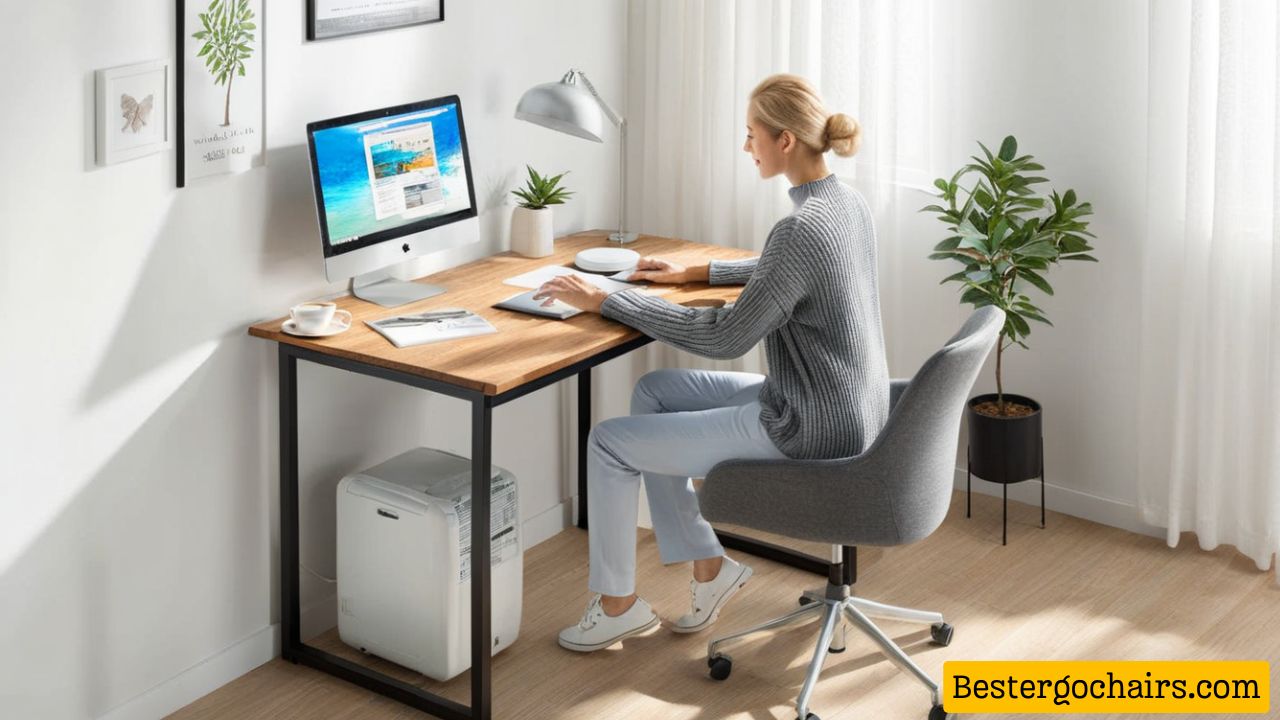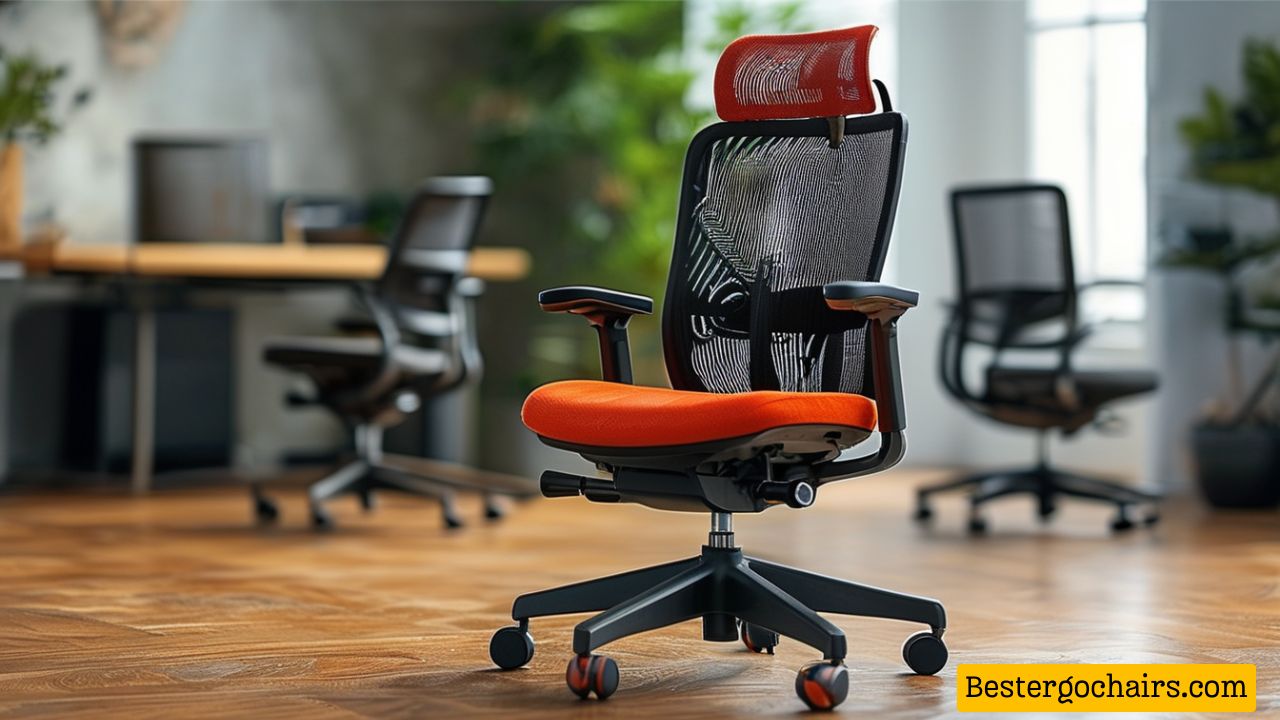Sitting for extended periods can take a toll on our bodies, leading to discomfort, pain, and even long-term health issues. Finding the right office chair is crucial to mitigate these problems and support your well-being while you work. This comprehensive guide will walk you through the key factors to consider when choosing an office chair that perfectly suits your body and needs.

Understanding Your Body’s Needs
Before diving into the features of office chairs, it’s essential to assess your individual needs. Everyone’s body is different, and understanding your unique requirements will help you make an informed decision.
Height and Weight
Your height and weight directly influence the chair’s overall size and support requirements. Taller individuals need chairs with adjustable features like seat height and backrest height to ensure proper posture. A chair that is too low can lead to slouching, which can cause back pain over time. Conversely, shorter individuals may require a chair that can be lowered sufficiently to allow their feet to rest flat on the floor.

Heavier individuals need chairs with sturdier construction and reinforced mechanisms. Look for chairs that are rated for higher weight capacities, as they will provide better support and stability. Additionally, consider the width of the seat; it should accommodate your hips comfortably without feeling cramped.
Posture and Body Type
Do you have any existing back pain, neck pain, or other postural issues? It’s vital to choose a chair with features that address these concerns. For example, lumbar support, adjustable armrests, and a contoured backrest can help promote good posture and alleviate pressure on your spine.
Individuals with specific body types, such as those with wider hips or broader shoulders, may also need to pay attention to the seat width and backrest design. A chair that conforms to your body’s natural shape will provide better support and comfort throughout the day.
Work Style
Your work style plays a significant role in chair selection. If you spend most of your day hunched over a keyboard, you’ll need a chair with adjustable seat tilt and a high back. A chair that allows you to maintain an open hip angle while typing can reduce strain on your lower back.
If you frequently use a phone or need to stand up and move around, a chair with a swivel base and flexible armrests could be beneficial. Being able to turn easily without straining your back can enhance your productivity and comfort.
Essential Features of a Good Office Chair
Once you understand your body’s needs, you can explore the essential features to look for in a good office chair. These features play a critical role in ensuring your comfort and support during long hours of sitting.
Seat
The seat is one of the most important components of an office chair. It should be designed to accommodate your body comfortably.
Height Adjustability
The seat height should allow your feet to rest flat on the floor while your thighs are parallel to the floor. This ensures a neutral position for your hips and lower back. Look for chairs with a wide range of height adjustment to find the perfect fit for your body.
Seat Depth
The seat depth should be sufficient to support your thighs and provide enough space for your knees without pressure on the back of your legs. Avoid chairs that are too deep, as they can cut off circulation and lead to discomfort. Ideally, there should be a few inches of space between the back of your knees and the front edge of the seat.
Seat Width
Choose a chair with a seat width that comfortably accommodates your hips and shoulders. A wider seat provides greater stability and comfort, allowing you to shift positions without feeling restricted.
Seat Padding
Look for a chair with comfortable, supportive padding that is firm enough to maintain its shape but soft enough to distribute your weight evenly. High-density foam or gel-infused padding can provide excellent support and prevent fatigue during long periods of sitting.
Seat Tilt
The ability to adjust the seat tilt allows you to fine-tune the angle of your hips and back. A slight backward tilt can promote good posture by taking pressure off your lower back. Some chairs offer a seat slider feature, which allows you to adjust the depth of the seat for optimal leg support.
Backrest
The backrest is another critical component of an office chair, as it supports your spine and promotes healthy posture.
Backrest Height
Choose a backrest that extends to your upper back or shoulders, providing adequate support for your spine. A high backrest can help prevent slouching and encourage an upright position, reducing the risk of developing back pain.
Lumbar Support
A built-in lumbar support or the option to add a lumbar pillow is crucial for supporting your lower back and maintaining a healthy curve. Look for chairs with adjustable lumbar support that can be positioned to fit the natural curve of your spine.
Backrest Adjustability
The backrest should be adjustable to accommodate your height and desired sitting position. Look for chairs with adjustable backrest height, angle, and recline. This flexibility allows you to customize the chair to your specific needs, promoting comfort and reducing strain.
Backrest Material
Breathable mesh or breathable fabric backrests allow for airflow and ventilation, reducing sweating and discomfort. A well-ventilated backrest can keep you cool during long working hours, enhancing your overall experience.
Armrests
Armrests play a significant role in providing support for your arms and shoulders.
Adjustable Height and Width
Adjustable armrests allow you to customize the positioning for comfort and support. They should be able to move up and down, in and out, and sometimes even swivel for optimal positioning. Properly positioned armrests can help reduce shoulder tension and promote relaxation.
Padding and Support
Armrests should be padded for comfort and provide adequate support for your forearms and elbows. Look for armrests with a contoured shape that fits your body. Well-padded armrests can prevent discomfort during prolonged use, allowing you to focus on your work.
Base
The base of the chair is essential for stability and mobility.
Sturdy Construction
Choose a base made of durable materials like metal or heavy-duty plastic. It should be stable and provide a solid platform for your chair. A sturdy base ensures that the chair remains stable, even during movement.
Swivel Base
A swivel base allows you to turn easily without straining your back. It’s especially helpful for those who need to reach different areas of their workspace. A smooth swiveling motion enhances your ability to multitask efficiently.
Casters
Smooth-rolling casters ensure easy movement around your office. Look for chairs with casters that are appropriate for your flooring type. Hard casters work well on carpeted surfaces, while soft casters are better suited for hard floors.
Choosing the Right Chair Type
While the features mentioned above are universal, different chair types cater to specific needs. Understanding the various options available can help you select the best chair for your situation.
Ergonomic Chairs
Ergonomic chairs are designed with a focus on promoting good posture and reducing the risk of injuries. They typically offer extensive adjustment features, lumbar support, and breathable materials.
These chairs often come equipped with multiple adjustment points, allowing you to customize the fit to your body. Many ergonomic chairs also include features like seat depth adjustment and dynamic backrests that move with you, providing continuous support.
Task Chairs
Task chairs are more traditional office chairs that often focus on adjustable seat height, backrest height, and armrests. They are suitable for most office work but might lack some of the advanced features of ergonomic chairs.
Task chairs are generally lightweight and easy to move, making them a practical choice for shared workspaces or hot-desking environments. While they may not offer the same level of customization, they can still provide decent support for everyday tasks.
Executive Chairs
Executive chairs offer a higher level of comfort and style. They may feature more luxurious upholstery, plush padding, and advanced adjustment features.
These chairs are often larger and more visually appealing, making them a popular choice for management and executive offices. While they prioritize aesthetics, many executive chairs also provide excellent support and comfort for long hours of sitting.
Gaming Chairs
Gaming chairs are designed for gamers and often feature an increased focus on comfort, padding, and a racing-inspired design. While they can be suitable for office use, they might not offer the same level of adjustability and support as ergonomic chairs.
Gaming chairs typically come with high backs and ample cushioning, which can be beneficial for long gaming sessions or extended work hours. However, it’s essential to ensure that a gaming chair meets your ergonomic needs if you plan to use it for office work.
Kneeling Chairs
Kneeling chairs encourage a more upright posture by placing your knees slightly higher than your hips. They may be beneficial for those experiencing lower back pain but require some adaptation to get used to.
Kneeling chairs promote an open hip angle, which can relieve pressure on the lower back. However, they may not be suitable for everyone, especially those with knee or joint issues. It’s essential to try a kneeling chair before committing to it as your primary seating option.
Considerations Beyond Features
When selecting an office chair, it’s essential to consider factors beyond just the features. These additional considerations can impact your overall satisfaction with your purchase.
Price
Office chairs range from affordable to high-end. Determine your budget and find chairs that offer the features you need within your financial constraints. While it may be tempting to go for the cheapest option, investing in a quality chair can save you money in the long run by preventing discomfort and potential health issues.
Warranty
Look for chairs with a solid warranty that covers defects and malfunctions. This provides peace of mind and ensures you can get your chair repaired or replaced if necessary. A good warranty reflects the manufacturer’s confidence in their product and can be a valuable factor in your decision-making process.
Materials
Consider the materials used in the construction of the chair. Durable materials like metal, high-quality plastic, and breathable fabrics tend to last longer and provide better support. The materials used can also affect the chair’s overall comfort and aesthetic appeal.
Aesthetics and Style
While function is paramount, you also want to choose a chair that complements your office decor. Consider the color, fabric, and overall design of the chair to ensure it fits with your workspace. A chair that matches your office style can enhance the overall ambiance and create a more inviting work environment.
Try Before You Buy
One of the most crucial steps in choosing the right office chair is to try it before you buy it. Sitting in the chair for a few minutes and testing out the different adjustments can provide valuable insights into its comfort and suitability for your body.
Visit a Store
If possible, visit an office furniture store or a retail outlet where you can try out different chairs and compare them side by side. Pay attention to how comfortable each chair feels and whether it supports your body properly. Don’t hesitate to ask sales associates for recommendations based on your specific needs.
Test Different Adjustments
When trying out a chair, test all the adjustable features. Adjust the seat height, backrest angle, and armrest positions to see how they feel. Make sure you can achieve a comfortable sitting position that promotes good posture.
Take Your Time
Don’t rush the decision-making process. Spend enough time testing various chairs to find the one that feels right for you. Remember that this chair will be your companion during long hours of work, so it’s worth investing the time to find the perfect fit.
Additional Tips for Choosing the Right Office Chair
In addition to the factors discussed, here are some additional tips to consider when selecting the right office chair for your needs.
Consult a Doctor or Physical Therapist
If you have specific health concerns or chronic pain, consult a doctor or physical therapist for personalized recommendations. They can provide insights into the features that would best support your body and alleviate discomfort.
Read Reviews
Before making a purchase, read reviews from other users to get insights into the chair’s performance, comfort, and durability. User feedback can help you identify potential issues and determine whether a chair is worth the investment.
Consider Your Lifestyle
If you frequently travel, you might need a chair that is easy to assemble and disassemble. If you have limited space, look for a chair that can be adjusted for compact storage. Your lifestyle and work habits can significantly influence your chair choice.
Conclusion
Choosing the right office chair is an investment in your health and well-being. By understanding your body’s needs, considering essential features, and carefully evaluating options, you can find a chair that provides optimal support and comfort for your workspace. Remember that the best chair is the one that fits your body, supports your posture, and promotes a healthy and productive working experience. Prioritize your comfort and well-being, and you’ll enjoy the benefits of a well-chosen office chair for years to come.




